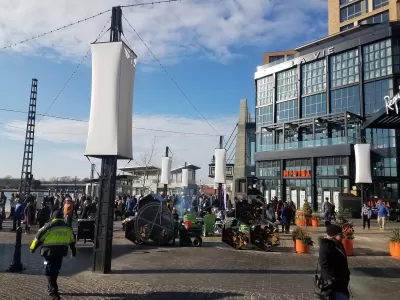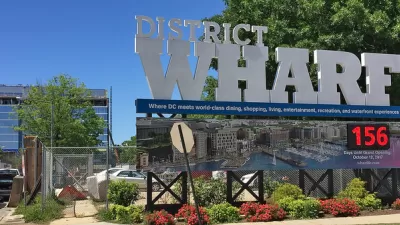Subtle design interventions can facilitate safe navigation in urban environments for people with cognitive abilities effected by dementia.

Washington, D.C. is one of many cities with a growing population of older adults. "31% of the region’s population growth between now and 2045 will comprise people over the age of 65. Among these hundreds of thousands of people, up to a quarter will have dementia and other memory loss at some point in their lives," writes Jonathan Paul Katz.
Many lives could be improved by prioritizing design interventions that make urban spaces more usable for people with dementia, says Katz. Contrary to popular belief, the word dementia describes a range of conditions and experiences related to cognitive decline. Kats further asserts that people with dementia, however, can age in their communities rather than in an institutional situation.
Katz' article describes the difficulties faced by people with dementia in navigating an urban environment: "Skills that we take for granted are difficult for older adults with dementia, including the ability to find alternative routes, filter out extraneous sensory information, or remember directions."
Katz wants people wracking their brains to invent helpful design interventions to know that "walkable urban design and dementia-friendly design are often one and the same. There are also specific interventions that can make public spaces easier for people with dementia, including wayfinding, sensory and generational variation, and special attention to sitting areas and surfaces."
Read Katz' article to learn about a case study of The Wharf in Washington, D.C., in which designers provided sensory cues to help people affected by dementia navigate during their visit.
FULL STORY: Good urban design can make Greater Washington more dementia-friendly

Alabama: Trump Terminates Settlements for Black Communities Harmed By Raw Sewage
Trump deemed the landmark civil rights agreement “illegal DEI and environmental justice policy.”

Study: Maui’s Plan to Convert Vacation Rentals to Long-Term Housing Could Cause Nearly $1 Billion Economic Loss
The plan would reduce visitor accommodation by 25% resulting in 1,900 jobs lost.

Why Should We Subsidize Public Transportation?
Many public transit agencies face financial stress due to rising costs, declining fare revenue, and declining subsidies. Transit advocates must provide a strong business case for increasing public transit funding.

Paris Bike Boom Leads to Steep Drop in Air Pollution
The French city’s air quality has improved dramatically in the past 20 years, coinciding with a growth in cycling.

Why Housing Costs More to Build in California Than in Texas
Hard costs like labor and materials combined with ‘soft’ costs such as permitting make building in the San Francisco Bay Area almost three times as costly as in Texas cities.

San Diego County Sees a Rise in Urban Coyotes
San Diego County experiences a rise in urban coyotes, as sightings become prevalent throughout its urban neighbourhoods and surrounding areas.
Urban Design for Planners 1: Software Tools
This six-course series explores essential urban design concepts using open source software and equips planners with the tools they need to participate fully in the urban design process.
Planning for Universal Design
Learn the tools for implementing Universal Design in planning regulations.
Smith Gee Studio
Alamo Area Metropolitan Planning Organization
City of Santa Clarita
Institute for Housing and Urban Development Studies (IHS)
City of Grandview
Harvard GSD Executive Education
Toledo-Lucas County Plan Commissions
Salt Lake City
NYU Wagner Graduate School of Public Service




























